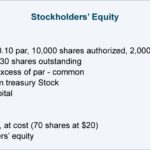ContentFree Accounting CoursesWhat is Leverage in Trading?Why Do Companies Prefer Long-Term Debt?Example of Trading on…
3 Key Differences Between Semi-Monthly vs Bi-Weekly Payroll
Employees are provided paychecks or direct deposit payments once payroll processing is completed, depending on the employer’s requirements. These payments contains precise estimations of hours worked, overtime, and other earnings, relevant taxes and withholdings, social security and medicare taxes, etc. Payroll is nothing but a set compensation paid to the employees for the job done over the agreed period.

If payday falls on a holiday or weekend, you will either need to advance or delay payroll, adding another responsibility to your plate. Biweekly pay and semimonthly pay can be confusing because employees generally receive two payments per month. With a semi-monthly payment system, workers typically work during two pay periods every month, usually from the 1st through the 15th and the 16th through the end of the month.
Example of Semimonthly Payroll
The one downside to biweekly payments is the inconsistency in how much money you are paying out each month. There will always be a couple of months where you will have three paydays instead of two. It will be up to you and your accountant to make sure you will have enough to cover the extra payout.
House’s monthly pay cycle, an inconvenience for some, could get … – Roll Call
House’s monthly pay cycle, an inconvenience for some, could get ….
Posted: Thu, 30 Mar 2023 07:00:00 GMT [source]
Paying your salaried workers biweekly is tricky when you have to stop and factor in leap years. Over the course of years, the extra day in a leap year will have to be accumulated and added onto an extra paycheck. In this case, 26 times a year payments will become 27 times, adding additional costs to payroll processing. Semi-monthly payroll will always and only ever happen 24 times in a year.
Monthly
A biweekly payroll is when a company distributes paychecks every other week on the same day. If the chosen payday is Friday, employees will receive their paychecks every other Friday, totaling 26 paychecks for the https://kelleysbookkeeping.com/a-small-business-guide-to-cost-centers/ year. When it comes to Semi-Monthly payroll, new hires will typically need to wait 4-6 weeks before receiving their first paycheck. This depends on the day they started in comparison to the payment schedule.

Two popular, yet easily confused, pay periods are biweekly and semimonthly. Knowing the difference between biweekly vs. semimonthly payroll can prevent financial setbacks, keep the business legally compliant, and more. Deciding on a pay frequency for your small business is an important decision. Your pay frequency determines how often you process payroll and when employees receive their paychecks.
Differences in Payroll Frequency
Because calculations take place every other week, it is easy to manage overtime accordingly. Because you run payroll less for semimonthly frequencies than biweekly, your employees’ paychecks will be greater. Biweekly paychecks will be less money, but you will provide the two additional paychecks to make up the difference.
If you are running a semi-monthly payroll period, however, they know that they will receive a payment on the 7th and the 21st of the month. Semi-monthly and bi-weekly sound like the same What Is The Difference Between Biweekly And Semimonthly Payroll? thing, but there are some key differences between these two payroll schedules. Because you must run payroll on a different day of the week, you could lose track of your responsibility.
Bi-Weekly Payroll Vs Semi-Monthly Payroll: What’s The Difference?
Employers often specify the pay period from daily to weekly, bi-weekly, semi-monthly, or monthly. The most typical payment schedule is bi-weekly when employees are paid every two weeks. A bi-weekly payroll schedule may work better for some businesses than others.
- Typically, it occurs on fixed days like the 1st, 15th, or 30th of the month.
- With a bi-weekly payment schedule employees are paid every other week, whereas a semi-monthly payment schedule pays employees twice a month on two specific dates each month.
- Some businesses opt for semi-monthly payroll system, where employees are paid after every 15 days of the respective month.
- For example, in Alabama and South Carolina, there are no specified regulations, so companies can choose whichever schedule they prefer.
- Just be sure to keep your employees updated on any advanced or delayed payments you will be making and everything will be just fine.
